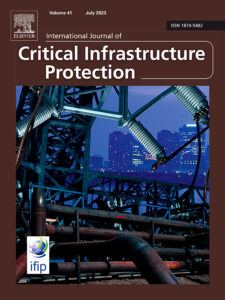Impacts of 5G on Cyber-Physical Risks for Interdependent Connected Smart Critical Infrastructure Systems

Vargas, P., and Tien, I., “Impacts of 5G on Cyber-Physical Risks for Interdependent Connected Smart Critical Infrastructure Systems,” International Journal of Critical Infrastructure Protection, Vol. 42, September 2023
Abstract — 5 G technology promises a wide range of benefits for critical infrastructure (CI), including improved reliability, increased efficiency, cost savings, and increased worker safety. However, it also brings many new risks that CI owners and operators must be prepared for to facilitate effective risk mitigation and response. These risks, however, have not been systematically assessed for CI systems. This paper investigates how the cyber-physical risk landscape will be impacted by 5 G for four major CI sectors in detail: smart transportation, smart water, smart power, and smart oil and gas networks. Compared to prior work only examining a single CI network, the authors present a comprehensive assessment of the types of threats that these sectors can expect based on past incidents, the new vulnerabilities introduced by 5 G and existing vulnerabilities exacerbated by the introduction of more connected devices, along with mitigation recommendations for each risk. Risks associated with the rollout of and transition to 5 G, risks from 5 G network disruptions, cyberattack risks, and privacy risks are included. While each of the sectors has a unique risk profile, general themes also emerged across multiple CI networks. Notably, there will be an increased number of threat vectors from smart devices reliant on the telecommunications network to provide monitoring and control of infrastructure services. Because many of these devices are accessible by the public, the risk of social engineering attacks and vulnerability to physical hacking are exacerbated. Successful risk mitigation requires collaboration among CI’s many stakeholders to implement security measures at the interfaces between connected devices to limit the access to assets in case one security measure is successfully bypassed. Due to the increased interdependencies between CI networks, operators must create backup plans to keep the most essential services running on a smaller bandwidth in case of a 5 G outage or similar failure. As 5 G capabilities continue to develop and the risk landscape evolves, ongoing research is needed and CI owners and operators should be prepared to update security measures to remain ahead of identified risks and threats.
Leave a Reply